Workforce Skilling
GHE Aug 28, 2024
Greening the Remote Landscape
Solar Electrification for the Villages
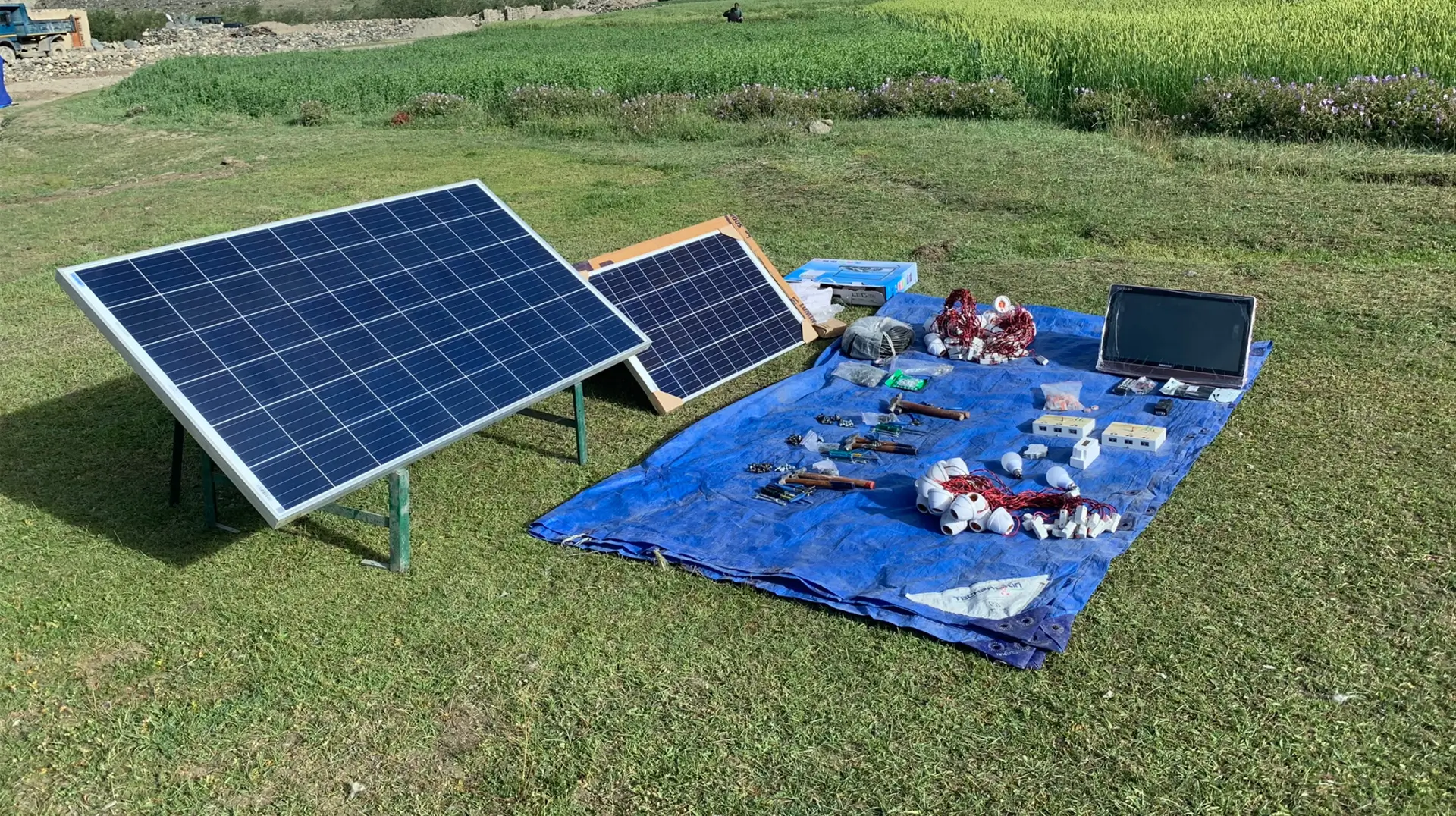
According to the World Bank, 650 million people have no access to electricity.
Stanzin Dolma is a woman who lives in the remote village of Shade, in the Zanskar valley of Indian Himalayas. Her village is located at a trek distance of two days from the nearest motorable road. Dolma has a house in this centuries old village and is living with her husband and three children. She tends to her farms during the daytime and comes back to her house in the evening. Once back, she lights up the kerosene lamps to provide illumination in the darkness of her house. Her family received a battery and two CFL lamps many years ago from the government; these have stopped working so kerosene lamps are their only hope for light.
The villagers who lack access to energy rely on costly, outdated technologies that are harmful to their health, and hinder their opportunities for social and economic advancement. The people resort to kerosene lamps, candles, and smoky, inefficient cookstoves, which cause more health damage and environmental damage. The household pay most of the money as proportion of their household income for inadequate, dangerous, and unhealthy energy sources that kill many women and children prematurely.
How does one reach to Dolma in the first place, and once you reach her village, how do you provide them access to energy given the geographic constraints? There is a push for universal energy access by governments all over the world, however, the barriers to reaching universal access are socioeconomic, geographic and demographic.
The challenge of reaching remote populations in rural areas makes capital-intensive electrification even more costly. Setting up of grid infrastructure involves huge investments during construction phase. These initial investments and the operating expense need to be recovered from the end users through a monthly tariff. Here is where things become difficult, since the high cost is being spread among rural population and the population is spread out, which results in a very high per household monthly tariff — more than what we end up paying in cities. The poor people end up paying more than the rich people for getting electricity. This is one of the major reasons that providing energy access to villages does not immediately result in the acceptance of electricity in each and every household.
So what do you do? How can one reach out to the several women like Dolma who don’t have access to electricity and improve their living conditions?
Solutions
This is where GHE has been pioneering the concept of decentralised Solar Grids. GHE pioneers solar power solutions in remote Indian villages, aligning with climate action and building resilient communities. Each household receives a decentralized solar grid and battery, transitioning from fossil fuels to renewable energy. GHE identifies and trains local entrepreneurs to maintain the infrastructure through service centers. The goal is energy independence, propelling villages from pre-industrial to the 4th industrial revolution. By generating their own energy, communities contribute to sustainability. GHE sees energy as a catalyst for impact, directly enhancing community livelihoods. Energy access programs power rural activities, addressing poverty and improving living standards, creating a sustainable future.
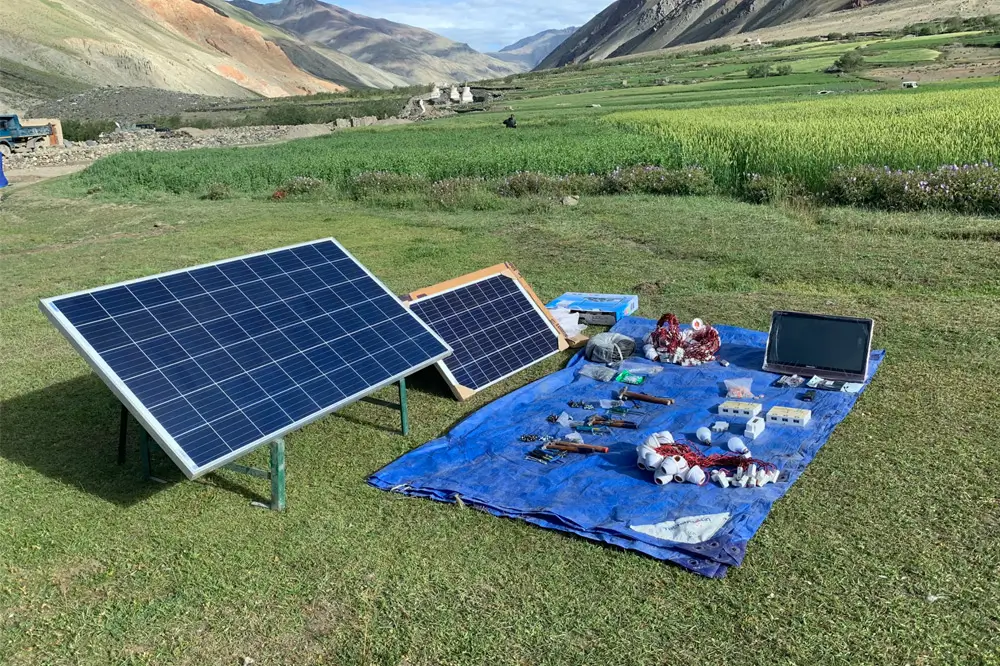
Technology
DC Solar Microgrids
Features of the DC Solar Microgrid
- The entire setup is based on 12/24V DC which helps in avoiding conversion losses. The energy generated from sun is trapped by PV panels and stored in the solar tubular batteries. Which is later distributed among the village households during evening and night time
- DC based system eliminates the possibility of fatal accident due to electric shock. The transmission and distribution voltage is just 12V, safe enough for anyone in the village. As these villages are in remote areas we specifically promote DC based systems to avoid an emergency situation generated out of electric shock
- The Solar Tubular Lead Acid batteries provided with the system comes with 5 year on-site warranty and can be easily maintained by the Village Solar Entrepreneur
- The batteries provided with the microgrids are normally chosen as 100-200Ah capacity due to their weight specifications that is ideal for to carry it to these remote villages.
- DC is safer than AC. In remote areas like these it is better to deploy DC based systems as it allows safe operation as the nearest medical facility in these villages will be at least a day’s trek distance from their village.
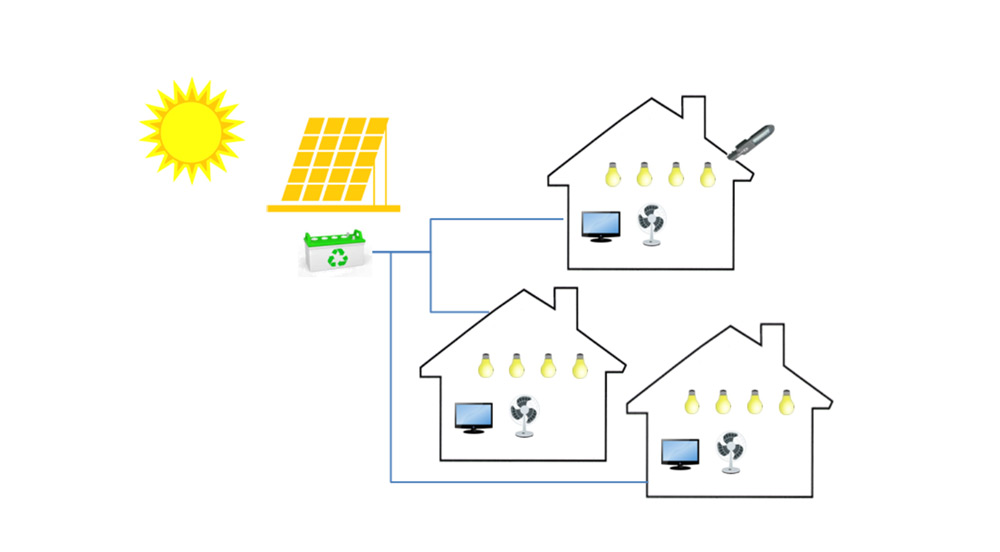
LED Assembly Line ongoing Training
Training and Local Engagement
Youth from clusters of villages are identified and provided with a week-long training covering solar energy, AC grids, and basic electrical know-how. Participants not only acquire knowledge about solar energy but also gain practical experience through installation exercises. Beyond education, the training fosters an entrepreneurial spirit in these emerging solar enthusiasts. The solar training initiative serves a dual purpose – empowering local youth with skills aligned with current needs and contributing to India’s sustainable energy future. It goes beyond imparting knowledge; it’s about instilling a sense of purpose and environmental stewardship.

Training as Solar Engineers

Practical Demonstrations

Entrepreneurial Service Centre
GHE works on establishment of service centers catering to a cluster of villages, intended for maintaining the microgrids installed. These service centers facilitate any necessary repair, service, or expansion work planned by the villagers. The presence of a local service center also ensures a smooth supply of spare parts and other accessories in the region.
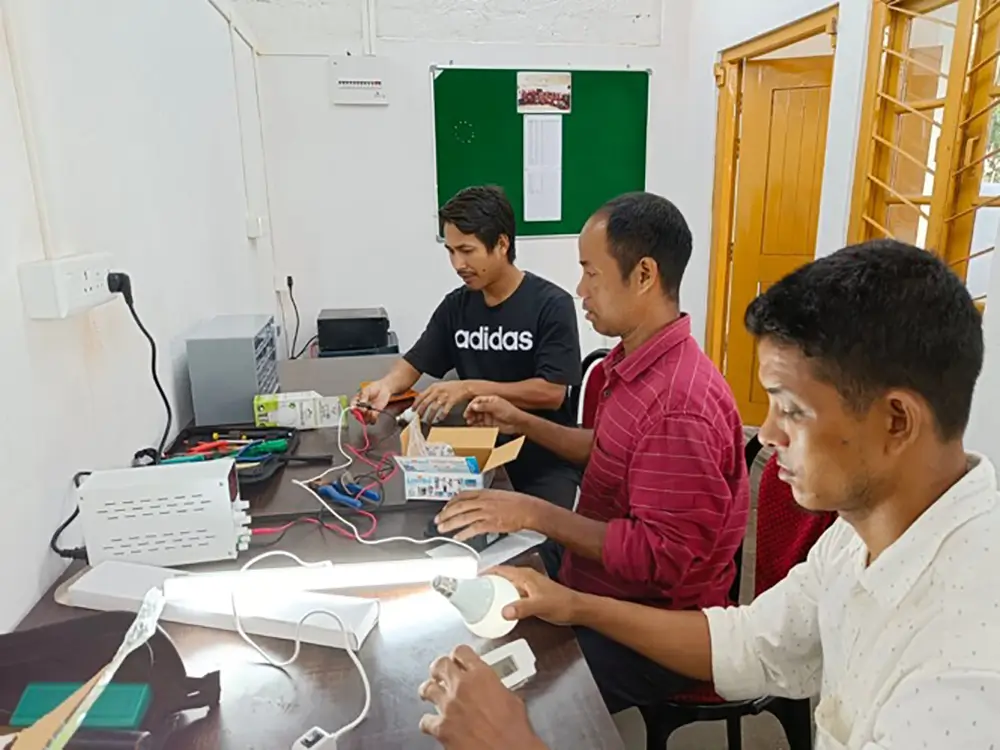
Engineers at Service Centre
Modus Operandi
- Identifying and selecting clusters of villages requiring energy access through consultations with the state energy department and district administration.
- Conducting a baseline analysis of the communities’ energy needs and existing setups.
- Collaboratively designing solar grids to meet current and future community aspirations.
- Training local youth as solar engineers, focusing on installation and maintenance
- Procuring solar grid materials from various vendors and arranging transportation
- Installing, commissioning, and handing over the grids to the communities.
- Regular monitoring, including warranty and annual maintenance contract (AMC) checks.

Mobilization of Communities

Training of Local Youth on Solar

Setup of Solar Grids
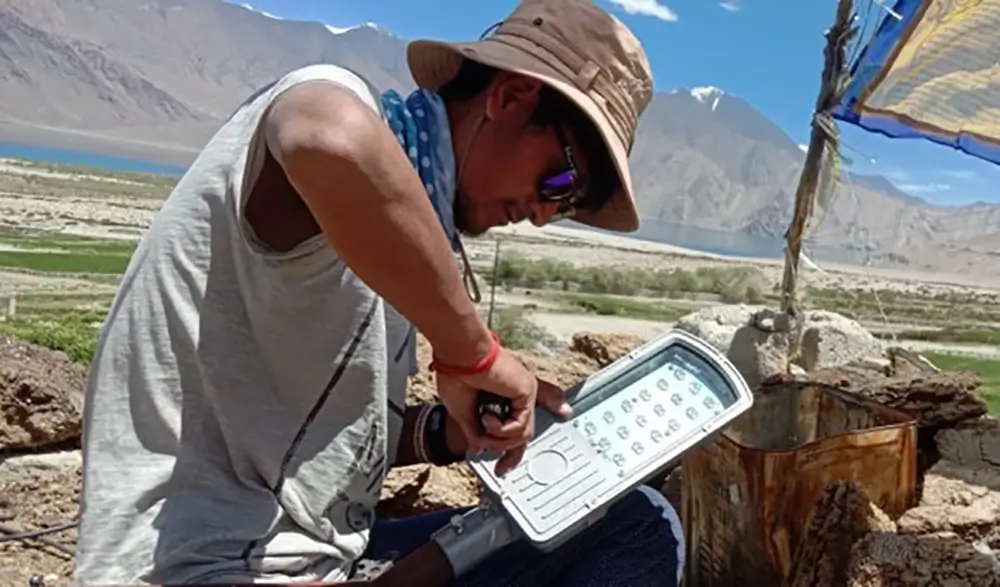
Maintenance and AMC
GHE has setup 1.4MW of distributed solar energy till date
Impact
Introducing solar energy to remote villages that still live in darkness can profoundly transform various aspects of life within these communities. By providing a reliable source of lighting, solar energy extends productive hours beyond sunset, allowing children to study in the evening, families to carry out household activities, and communities to hold social gatherings. Replacing kerosene lamps with solar-powered lights significantly improves health by reducing indoor air pollution and the risks associated with kerosene fires. Economically, solar energy enables small businesses to operate after dark, thereby increasing income opportunities, while households benefit from cost savings.
In the realm of education, solar lighting extends study hours and powers schools, enhancing educational outcomes and enabling digital learning. Environmentally, solar energy reduces reliance on fossil fuels, curbing carbon emissions, and conserving natural resources like firewood. Socially, it empowers women and girls by freeing up time from household energy management, fosters community cohesion, and enhances safety through solar-powered street lights. At GHE, the idea of introduction of solar energy is to not only bring light to these villages but also unlock new opportunities for sustainable development, economic growth, and an overall improved quality of life, paving the way for a brighter and more sustainable future.
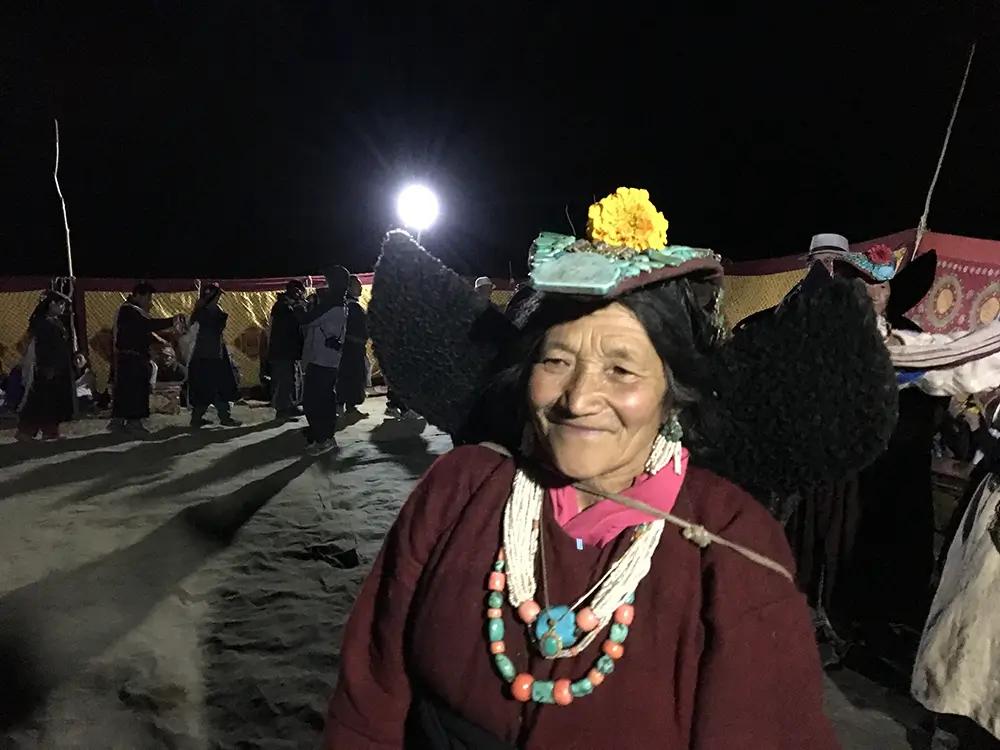
“This is our land, our lives given by our ancestors. This is heritage to our children. Now that we have light, what else can we wish for”
– Rinchen Dolma, Villager, Urbis, Ladakh, India
Latest Blogs
Explore perspectives on the work we do and ways to make an even greater impact together.



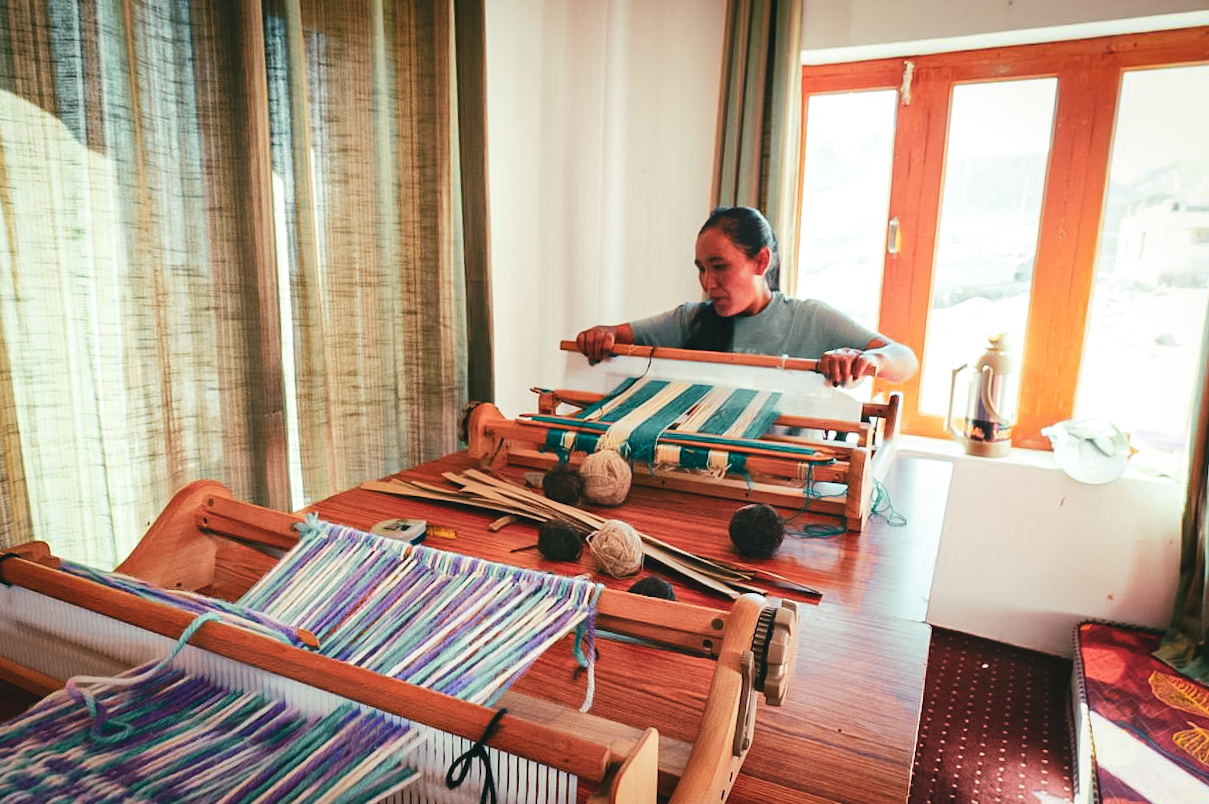
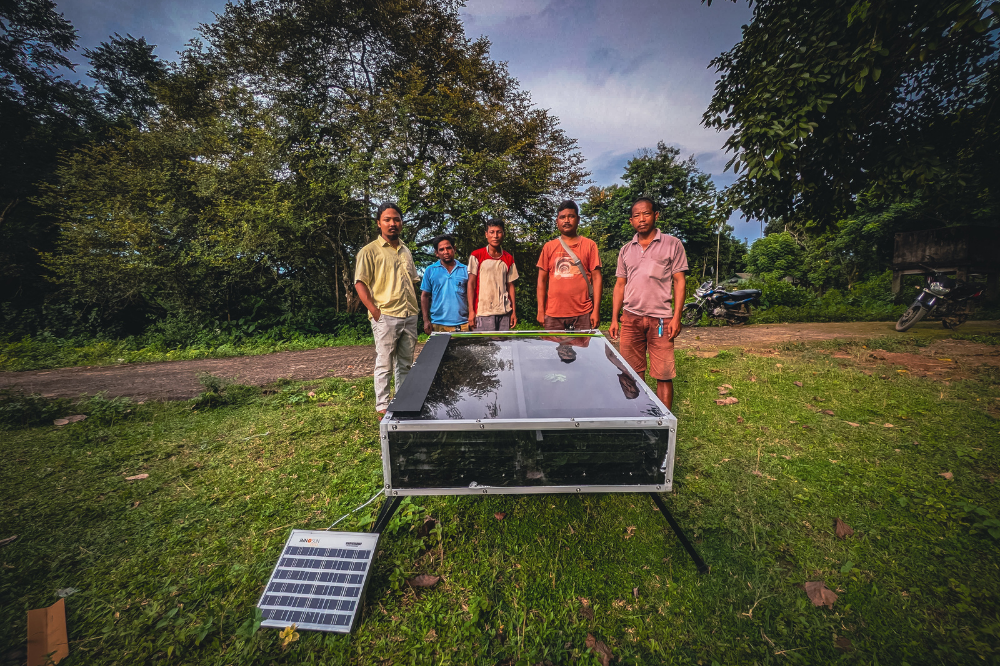
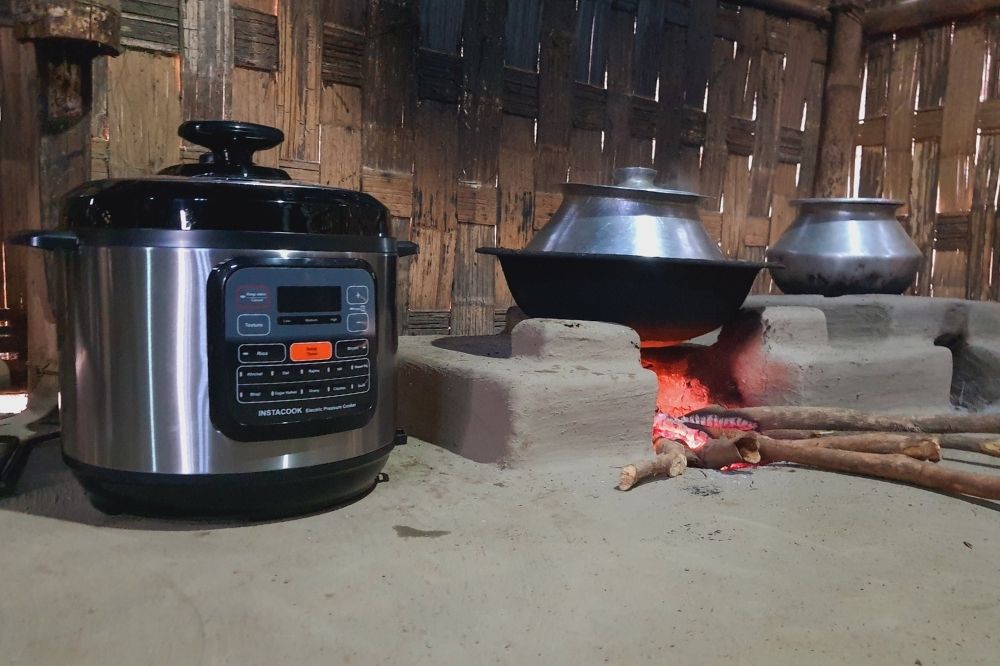







0 Comments